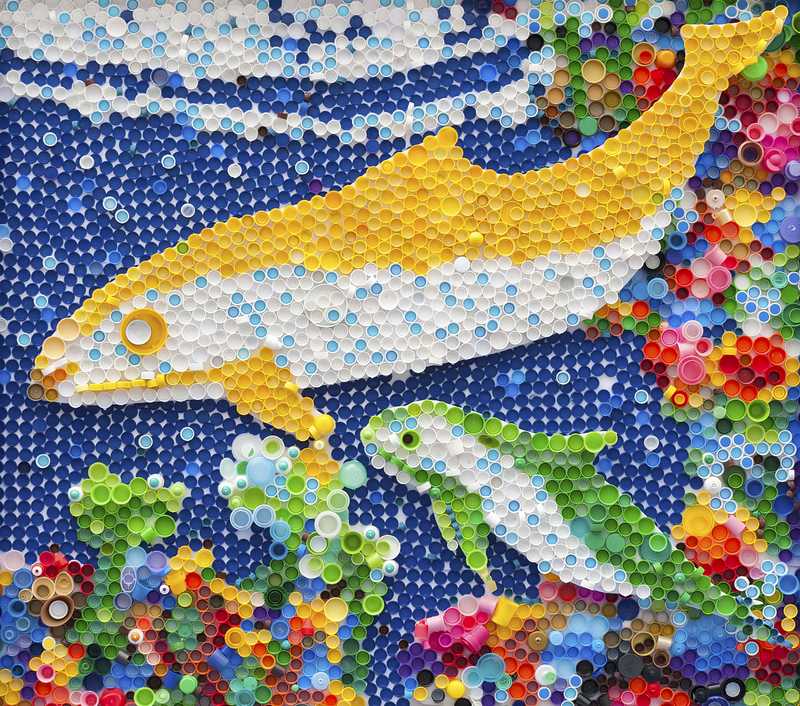Recycling Fabrics: Innovative Ways to Refresh Your Wardrobe
In a world increasingly focused on sustainability, finding innovative ways to recycle fabrics and breathe new life into your wardrobe is both eco-conscious and creatively rewarding. Recycling fabrics does not just reduce textile waste; it revitalizes your style with unique, custom pieces. This comprehensive guide will unveil the most imaginative and practical ways to repurpose old clothes and fabrics, ensuring your wardrobe stays fresh, fashionable, and environmentally friendly.
Why Recycle Fabrics?
Before diving into techniques and ideas, understanding the importance of fabric recycling is essential. The fashion industry is one of the world's largest polluters, generating millions of tons of textile waste annually. Most discarded fabrics end up in landfills, taking years to decompose and potentially releasing harmful chemicals.
- Environmental Benefits: Reduces landfill use and conserves natural resources.
- Economic Savings: Repurposing clothes can cut down on fashion expenses.
- Unique Style: Custom upcycled pieces are one-of-a-kind and tell a personal story.
- Creativity Outlet: Sewing, dyeing, and crafting recycled textiles offer a gratifying way to express yourself.
Textile Waste: A Growing Concern
According to the Environmental Protection Agency (EPA), approximately 11.3 million tons of textiles were discarded in U.S. landfills in 2018 alone. This staggering statistic underlines the need for fabric recycling solutions at home.

Effective Techniques for Fabric Recycling
Transforming old fabrics doesn't require advanced sewing skills or expensive equipment. Here are several innovative methods for recycling your wardrobe:
1. Upcycling Old Clothes into New Looks
Upcycling means giving a higher value to your old garments by turning them into fashionable new pieces. This is one of the most creative approaches to repurposing fabrics.
- Patchwork: Combine scraps from different clothes to craft unique jackets, skirts, or denim jeans. Patchwork is especially trendy and adds a vibrant personality to garments.
- T-shirt Makeovers: Convert oversized tees into fitted tops, tank tops, or even trendy crop tops using simple cuts and tie techniques.
- Dress to Skirt Transformations: Change a worn-out dress into a new skirt or blouse with a few strategic cuts and some basic sewing.
- Blazer into Vest: Remove the sleeves and tailor the sides of an outdated blazer to turn it into an on-trend vest.
2. Dyeing and Printing for a Fresh Appeal
Sometimes all an old fabric needs is a color boost. Dyeing and fabric printing are cost-effective ways to refresh faded or stained clothing.
- Natural Dyeing: Use items like onion skins, avocado pits, turmeric, or beetroot for eco-friendly fabric dyeing. These impart earthy, unique shades and make your clothes stand out.
- Tie-Dye: This classic technique has a modern revival. Experiment with different patterns and color combinations for eye-catching results.
- Block Printing or Stenciling: Purchase or create homemade fabric stamps to print patterns onto plain shirts, tote bags, or scarves.
3. Repair and Embellish for Longevity
Extending the life of your favorite clothes is a cornerstone of fabric recycling. Creative repairs not only save your garments but also add custom flair.
- Mending: Fix holes or worn areas with visible mending techniques such as Japanese Sashiko embroidery, which uses contrasting threads for artistic effect.
- Adding Embellishments: Decorate collars, cuffs, or pockets with beads, sequins, iron-on patches, or embroidered designs for a revitalized look.
- Replacing Buttons and Zippers: Swapping out plain buttons or faulty zips can make a garment feel new.
Creative Projects: Turning Scraps into Treasures
Don't let even the smallest textile leftovers go to waste. Here are ingenious ways to turn scraps into functional and decorative items.
Quilts and Blankets
Patch together various fabric scraps to create cozy quilts or throws. This project not only recycles old fabrics but also creates long-lasting, practical keepsakes.
Recycled Accessories
- Hair Accessories: Craft fabric-covered headbands, scrunchies, or even stylish hair bows.
- Jewelry: Use tightly rolled or braided fabric strips to create necklaces, bracelets, and earrings.
- Bags and Purses: Sew together sturdy scraps to create one-of-a-kind tote bags or pouches.
Home Decor from Old Clothes
- Pillow Covers: Transform old shirts, sweaters, or jeans into unique cushion covers.
- Rugs: Weave, braid, or sew fabric strips into colorful rugs, perfect for bedrooms or entryways.
- Wall Art: Stretch interesting fabric pieces over canvases for personalized wall displays.
Modern Innovations in Fabric Recycling
With environmental awareness on the rise, brands and innovators are developing new ways to reclaim and reuse textiles. Here are some cutting-edge developments in fabric recycling:
Textile-to-Textile Recycling
Advanced processes now enable the recycling of post-consumer textiles directly into new fibers, which can be spun into fresh yarns and fabrics. These techniques often use mechanical or chemical recycling.
- Mechanical Recycling: Fabrics are shredded, carded, and re-spun to create new yarn. Common in wool and cotton recycling.
- Chemical Recycling: Polymers in synthetic fabrics like polyester are broken down and reconstituted into new textiles. This supports true circularity in fashion.
Recycled Fabric Brands and Programs
- Patagonia: Pioneers in using recycled polyester crafted from discarded plastic bottles and post-consumer textiles.
- Levi's: Their Wellthread line incorporates recycled cotton and other sustainable fibers.
- H&M's Garment Collection: Customers bring in old clothes for recycling, which are then sorted for reuse or fiber reclamation.
Zero Waste Design Approaches
Designers are increasingly adopting patterns and layouts that minimize fabric scraps, making the entire garment creation process more sustainable. Brands focusing on zero waste use every piece of textile, ensuring that nothing reaches landfill.
How to Start Recycling Fabrics at Home
Embracing fabric recycling begins with a few simple steps. Here's how you can start refreshing your own wardrobe with creativity and consciousness:
Step 1: Assess Your Wardrobe
- Sort through clothes and textiles you no longer wear or use. Look for items with potential for repair, upcycling, or transformation.
- Identify fabrics that are still in good condition but need a style update.
Step 2: Gather Basic Tools
- Sewing Kit: A needle, thread, scissors, pins, and a basic sewing machine if available.
- Decorative Extras: Embroidery thread, fabric paint, patches, and beads.
- Dye Materials: Natural dyes (vegetables, spices) or eco-friendly fabric dyes.
Step 3: Learn Simple Techniques
- Online Tutorials: Platforms like YouTube or Pinterest offer countless guides for beginners.
- Workshops and Classes: Check out local sewing or craft studios for hands-on learning.
- DIY Kits: Many retailers sell kits with everything you need for a specific upcycling project.
Step 4: Start Small and Experiment
- Begin with easy projects - like turning old T-shirts into cleaning rags or tote bags - before progressing to sewing or complex transformations.
- Don't be afraid to make mistakes; each attempt deepens your creativity and skillset.
Maximizing Impact: Donate or Swap Unwanted Clothes
Not every old garment fits an upcycling project. Consider organizing clothing swaps with friends, donating to local charities, or using textile recycling programs nearby. This ensures clothes stay in circulation and avoid the landfill.
- Charity Shops: They can sell or distribute usable clothing to those in need.
- Community Swaps: Gather with friends or neighbors to exchange items and find new favorites.
- Recycling Bins: Many cities now offer textile recycling points where you can drop off damaged or unusable fabrics.

Tips for Sustainable Fabric Buying in the Future
To maintain a sustainable wardrobe, keep these principles in mind when making future purchases:
- Choose Quality Over Quantity: Invest in well-made, durable pieces that will last for years.
- Opt for Natural Fibers: Organic cotton, linen, wool, and bamboo are biodegradable and often more eco-friendly.
- Prioritize Recycled Materials: Many brands now offer products made from 100% recycled or upcycled textiles.
- Support Ethical Brands: Buy from companies that prioritize fair wages, safe conditions, and sustainable practices.
Conclusion: Embrace Innovation & Conservation
Recycling fabrics and refreshing your wardrobe is more than just an eco-trend; it's a responsible and rewarding lifestyle shift. By embracing creative approaches like upcycling, dyeing, visible mending, and supporting circular fashion, you'll cultivate a wardrobe that's as unique as it is sustainable.
Whether you're cutting, sewing, swapping, or simply giving old clothes a facelift, every action counts in reducing waste and paving the way for a greener future in fashion.
Start your fabric recycling journey today, and you'll soon discover that sustainable style is not just possible--it's downright inspiring.